Hey there, fellow food explorers! I’ve got some exciting news that might surprise you – those bell pepper leaves you’ve been tossing in the compost? They’re totally edible! As someone who loves finding new ways to use every part of my garden plants, I was stoked to discover this hidden treasure Let me share everything I’ve learned about eating bell pepper leaves and how you can start using them in your kitchen.
Quick Answer: Yes, Bell Pepper Leaves Are Safe to Eat!
Bell pepper leaves are not only tasty, but also pretty good for you. Their flavor is softer and more delicate than that of the peppers themselves. They taste like spinach with a hint of white pepper. They might taste a little bitter when they’re raw, but when you cook them, they taste great.
Nutritional Benefits of Bell Pepper Leaves
These often-overlooked greens pack quite a nutritional punch
- High in Vitamins A and C
- Rich in antioxidants
- Good source of fiber
- Contains essential minerals like potassium
- Low in calories
How to Use Bell Pepper Leaves in Cooking
There are tons of ways to incorporate these versatile leaves into your meals:
1. Cooked Applications
- Stir-fries
- Soups and stews
- Sautéed as a side dish
- Added to omelets and frittatas
- Used in Filipino dishes like Tinola
2. Raw Applications
- Salad additions (younger leaves work best)
- Garnishes
- Smoothie ingredients
Tips for Selecting and Preparing Bell Pepper Leaves
When harvesting or selecting bell pepper leaves, keep these tips in mind:
- Choose young, tender leaves for the best flavor
- Avoid leaves with yellow spots or signs of disease
- Wash thoroughly before use
- For raw consumption, stick to younger leaves as they’re more tender
- Older leaves are better suited for cooking
Best Cooking Methods
Here’s my favorite way to prepare bell pepper leaves
- Heat olive oil in a pan
- Add minced garlic
- Toss in cleaned and chopped pepper leaves
- Sauté until wilted but still bright green
- Season with salt and pepper
- Finish with a squeeze of lemon juice
Important Safety Notes
While bell pepper leaves are safe to eat, there are some things to keep in mind:
- Always properly identify your pepper plants
- Ensure leaves are from the Capsicum annuum family
- Wash leaves thoroughly to remove any pesticides or dirt
- Start with small amounts if you’re trying them for the first time
Storage Tips
To keep your bell pepper leaves fresh:
- Store in an airtight container
- Keep in the refrigerator for up to 1 week
- Check regularly for wilting or discoloration
- Freeze clean, dry leaves for up to 6 months
Growing Your Own Bell Peppers for Leaves
If you’re interested in having a steady supply of bell pepper leaves, growing your own is super easy:
- Choose a sunny spot in your garden
- Plant in well-draining soil
- Water regularly
- Fertilize monthly
- Harvest leaves as needed, but don’t take too many from one plant
Recipe: Simple Bell Pepper Leaves Stir-Fry
Here’s a quick recipe to get you started:
Ingredients:
- 2 cups fresh bell pepper leaves
- 3 cloves garlic, minced
- 1 tablespoon olive oil
- Salt and pepper to taste
- Optional: chili flakes
Instructions:
- Heat oil in a pan over medium heat
- Add minced garlic and sauté until fragrant
- Add bell pepper leaves
- Stir-fry for 2-3 minutes until wilted
- Season with salt, pepper, and chili flakes if desired
- Serve hot
Common Questions About Bell Pepper Leaves
Q: Can I eat all pepper leaves? A: Many pepper leaves can be eaten, but to be safe, stick to bell peppers and other types that are known to be edible.
What do bell pepper leaves taste like? A: They don’t taste spicy at all; they have a mild peppery flavor.
Q: Can I eat them raw?
A: Yes, but younger leaves taste better raw. Older leaves are better cooked.
Final Thoughts
I have to say that learning that bell pepper leaves can be eaten has changed everything in my kitchen. It’s great that we can use more of the plant and throw away less of it. Plus, they can be used in a lot of different ways and give food a unique flavor. If you have bell peppers in your garden, don’t throw away the leaves. Instead, use them in your next meal.
Remember to start small and experiment with different cooking methods to find what you like best. And hey, if you’ve tried cooking with bell pepper leaves, I’d love to hear about your experience in the comments!
Happy cooking, y’all! ️
Would you like me to explain or break down any part of this article further?
1 Garlic and onion shoots
If you’ve grown hardneck garlic, you’re probably familiar with the flower stalks known as garlic scapes, whose scarcity makes them somewhat of a culinary delicacy. But did you know green garlic (also called spring garlic) is also edible and even easier to grow?.
You can plant green garlic in the fall or spring, and the leaves and immature bulb should be picked when the plant is still young. It doesn’t have any cloves or the papery skin of mature garlic, so it looks and tastes like a cross between garlic and green onion, which means it’s delicious.
The beauty of green garlic is how soon you can harvest the crop (none of this plant-in-October-and-harvest-in-July business), so you can plant a round in spring while you’re waiting to harvest your fall-planted garlic.
Related: How I grow garlic to get big bulbs
The same goes for onions. If you run out of scallions in the kitchen, you can actually trim the tops off your onion plants to use in your recipes. (Don’t cut them all off though; grab just what you need so the onion continues to develop. ).
Or, harvest your onions early (before the tops turn brown) and enjoy the fresh, tender leaves of those spring onions.
Disclosure: If you shop from my article or make a purchase through one of my links, I may receive commissions on some of the products I recommend.
Sweet potato leaves
Not to be confused with potatoes (the two plants are not related), sweet potatoes (Ipomoea batatas) are in the same family as morning glories, which is most apparent when you see both plants flowering.
The leaves of the sweet potato plant are mild in flavor and abundant in summer. They can be harvested all season long while you wait for the tubers to mature.
In climates where sweet potatoes survive year-round (it’s a perennial crop in zones 9 to 11), you can grow them just for the steady supply of greens.
The tender stems and leaves are both edible. They’re silky like spinach and wilt beautifully when cooked. Heat brings out their sweetness, so toss them into a soup, sauté, or stir-fry, by themselves or with other vegetables.
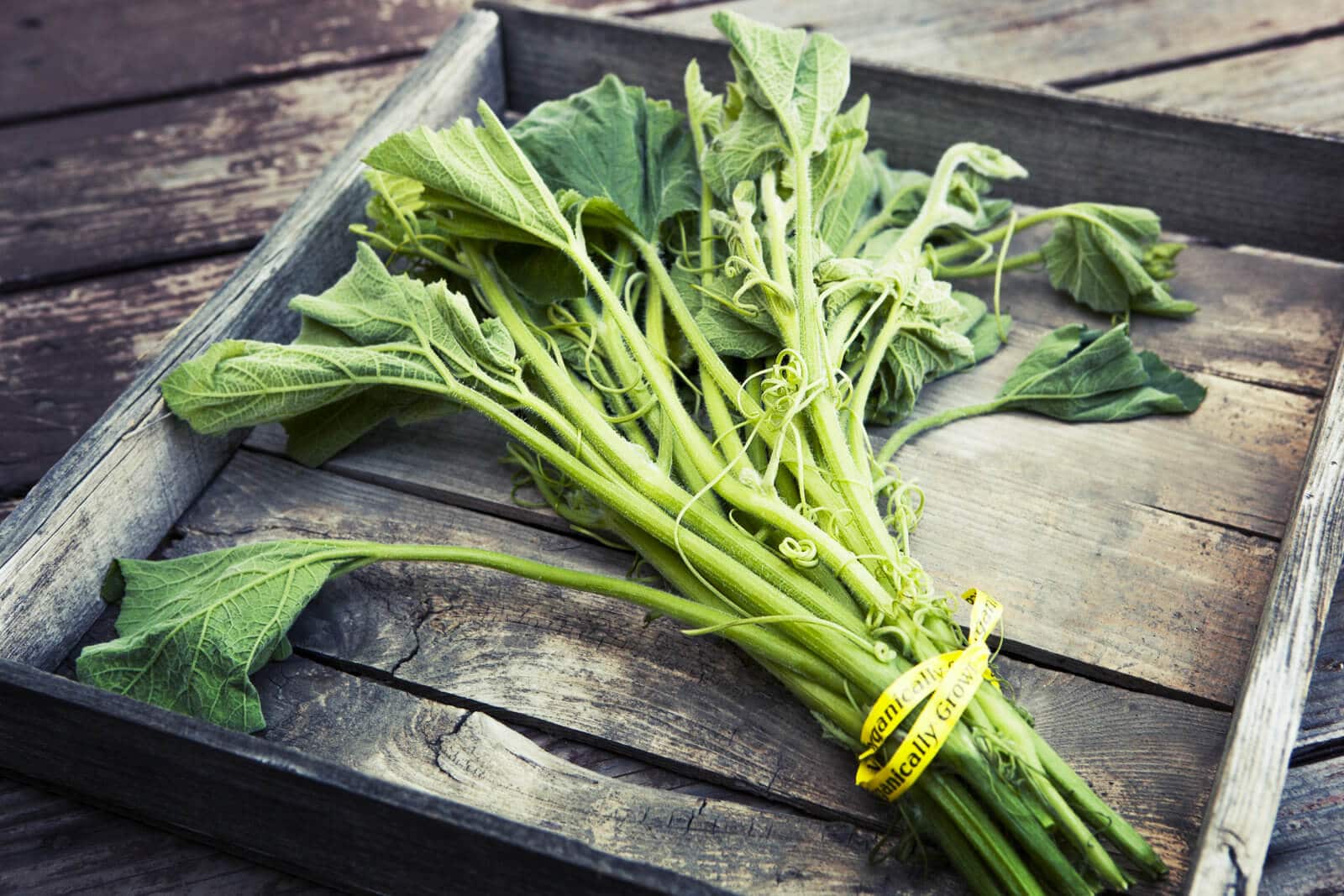
Summer squash and winter squash (from the five cultivated species Cucurbita pepo, C. moschata, C. maxima, C. argyrosperma, and C. ficifolia) are the plants that keep on giving.
As most people know, you can fry zucchini blossoms and roast pumpkin seeds. But did you know you can also eat squash leaves? The vines taste earthy and sweet, like the fruit they bear.
This means the entire plant is edible at every stage of growth, from sprout to fruit. (You’re not composting those thinnings, right? They’re delicious!) Though you can use the leaves from any species, Southeast Asian cooking traditionally features the leaves of opo squash, which is native to their cuisines.
To harvest, snip off the last few inches of the squash vine where you see new growth. This cluster of stems and leaves is called a squash shoot, and it’s the most tender part of the vine. Remove the tendrils (which tend to be tough and stringy) and cook the rest.
You can try them in recipes where you’d normally use chard and other similarly textured leafy greens.
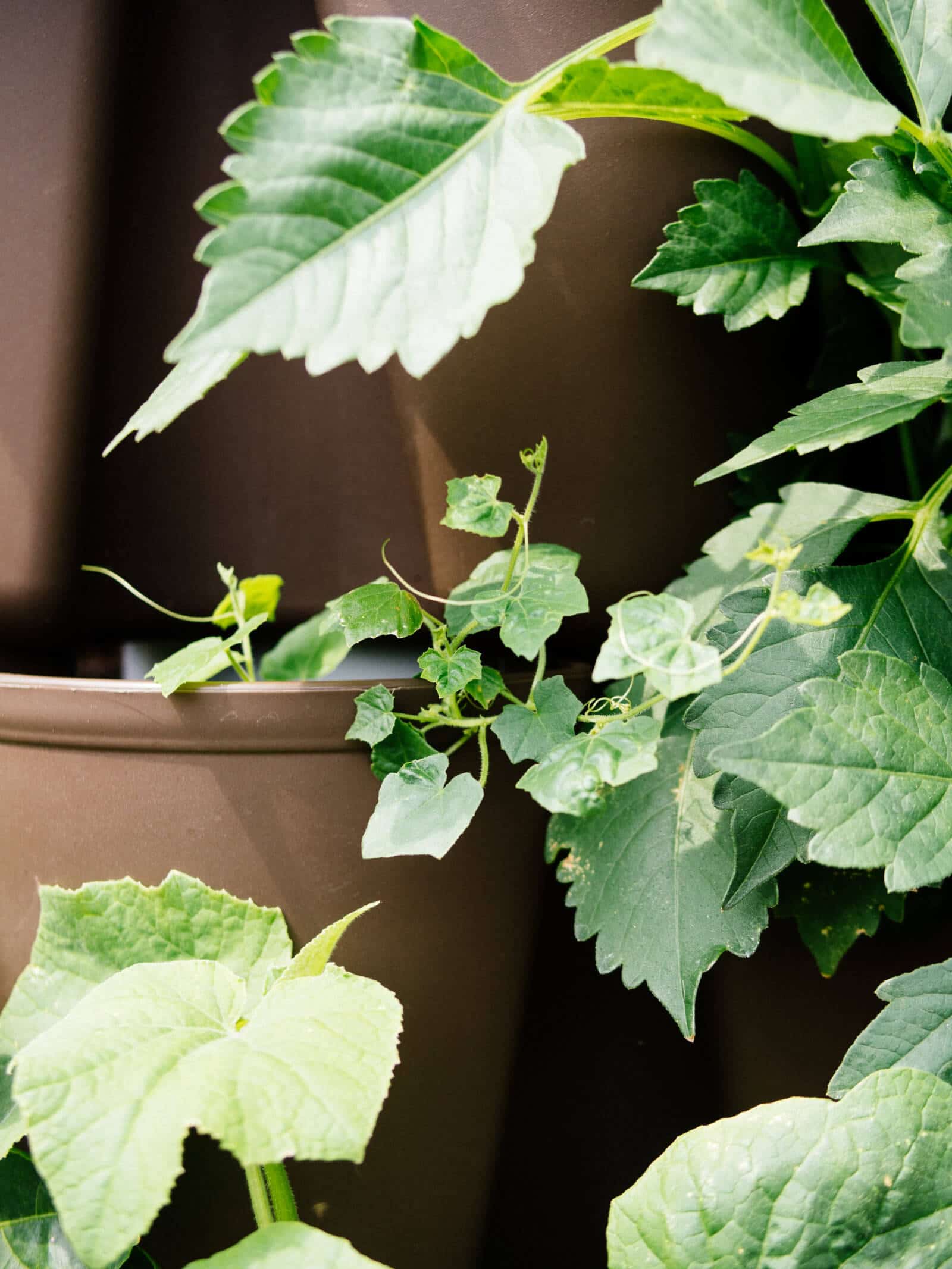
As a member of the Cucurbitaceae family, cucumbers (Cucumis sativus) share a lot of the same characteristics as their squash cousins. This includes being the perfect top-to-tail plant where the sprouts, stems, leaves, flowers, and fruit are all edible.
Fresh, crisp cucumber sprouts make an especially good salad green, but tender young cucumber leaves can be eaten as well. They’re so light and subtle that they’ll take on the flavor of whatever they’re cooked with, so I prefer them raw.
You just have to be careful not to over-pick the leaves, which can stunt production of the cucumbers. Or, try sowing a flat of cucumber seeds just for the nutrient-packed sprouts or microgreens.
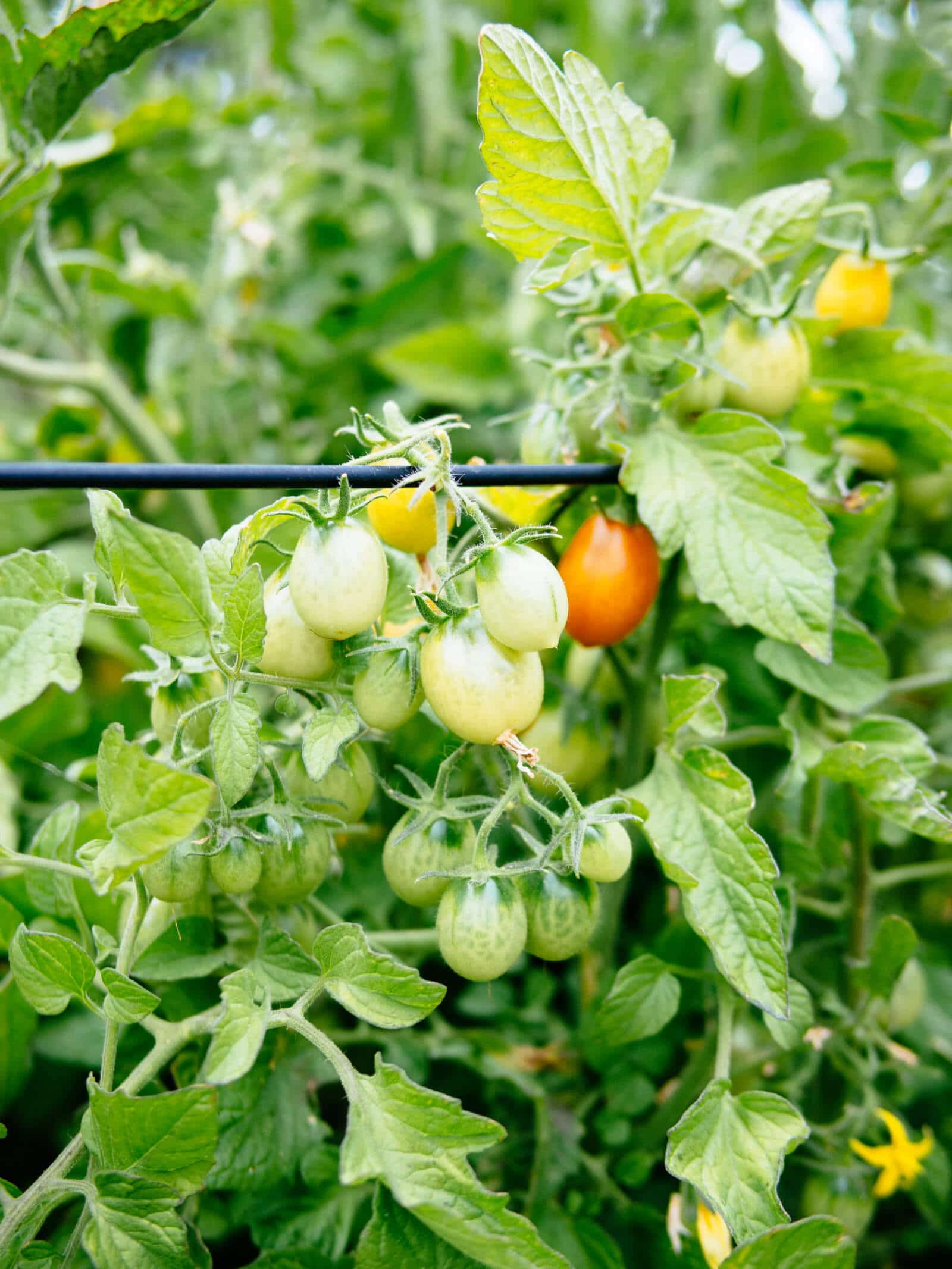
Tomatoes (Solanum lycopersicum) are a somewhat controversial addition to this list, but as I’ve written before, tomato leaves are not toxic when eaten in moderation (like everything else).
You can use them sparingly in sauces, soups, and salads (which is where I feel their rich, distinctive flavor works best). Tomato leaves add a deep savory note that comes alive when the leaves are cooked or chopped to bring out the oils.
My favorite use is infusing tomato leaves in tomato sauce, whether you’re making tomato sauce from scratch or trying to amp up store-bought sauce.
So the next time you’re picking some green, unripe tomatoes from your plants, don’t be afraid to harvest the young, tender leaves as well.
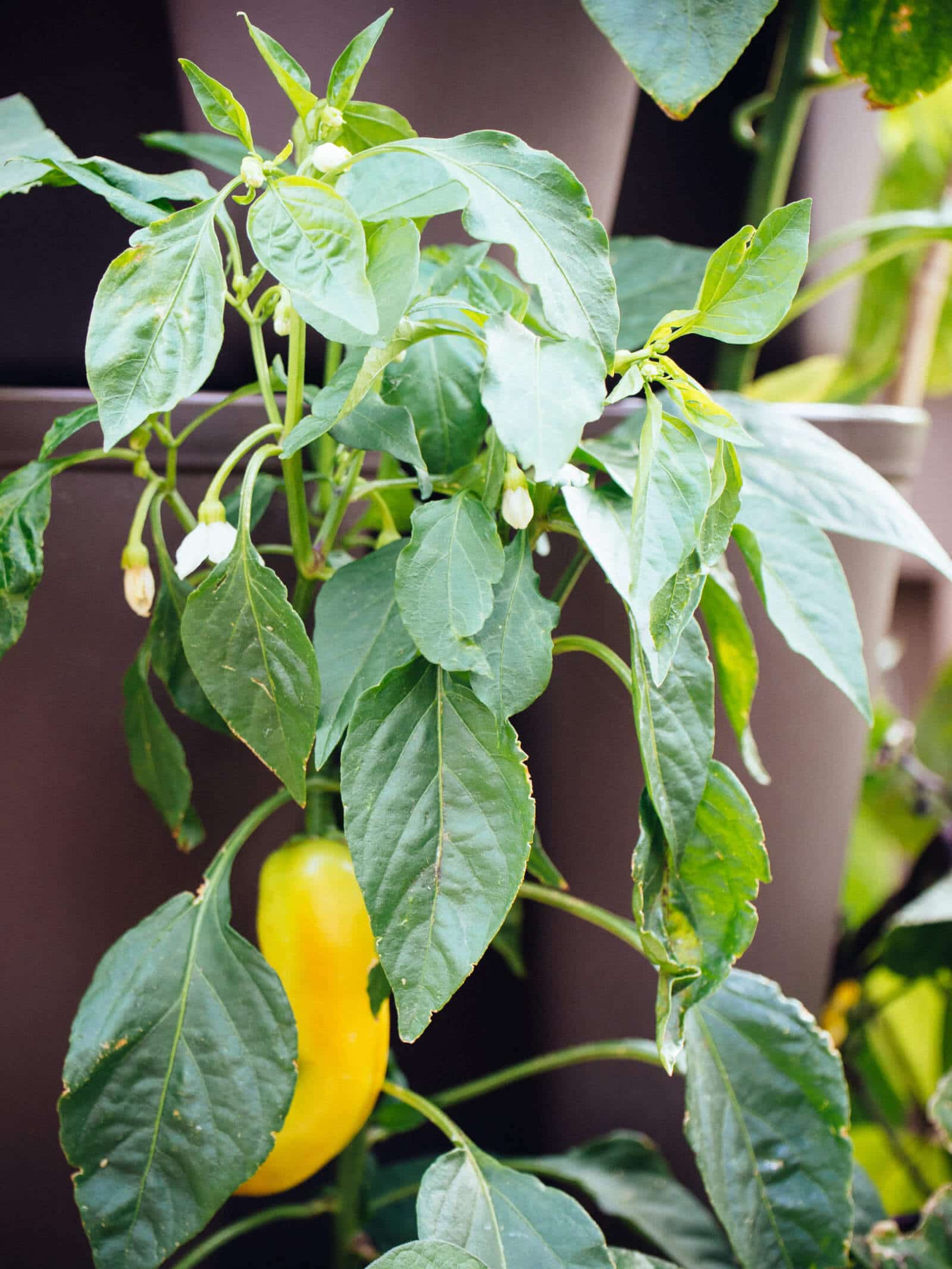
Surprise! The leaves from sweet pepper and hot pepper plants (Capsicum annuum and Capsicum frutescens) are edible and they are downright delicious.
They have a milder pepper flavor than the peppers themselves, and taste a little like white pepper—delicate and fragrant.
It doesn’t matter if you use the leaves from a sweet bell or a fiery habanero, as the chemical compound that gives peppers their heat (capsaicin) is concentrated in the ribs (inner membranes) of the fruit.
A popular use for pepper leaves is in the Filipino soup called tinola, though some homestyle Chinese dishes also use pepper leaves in braises and stir-fries.
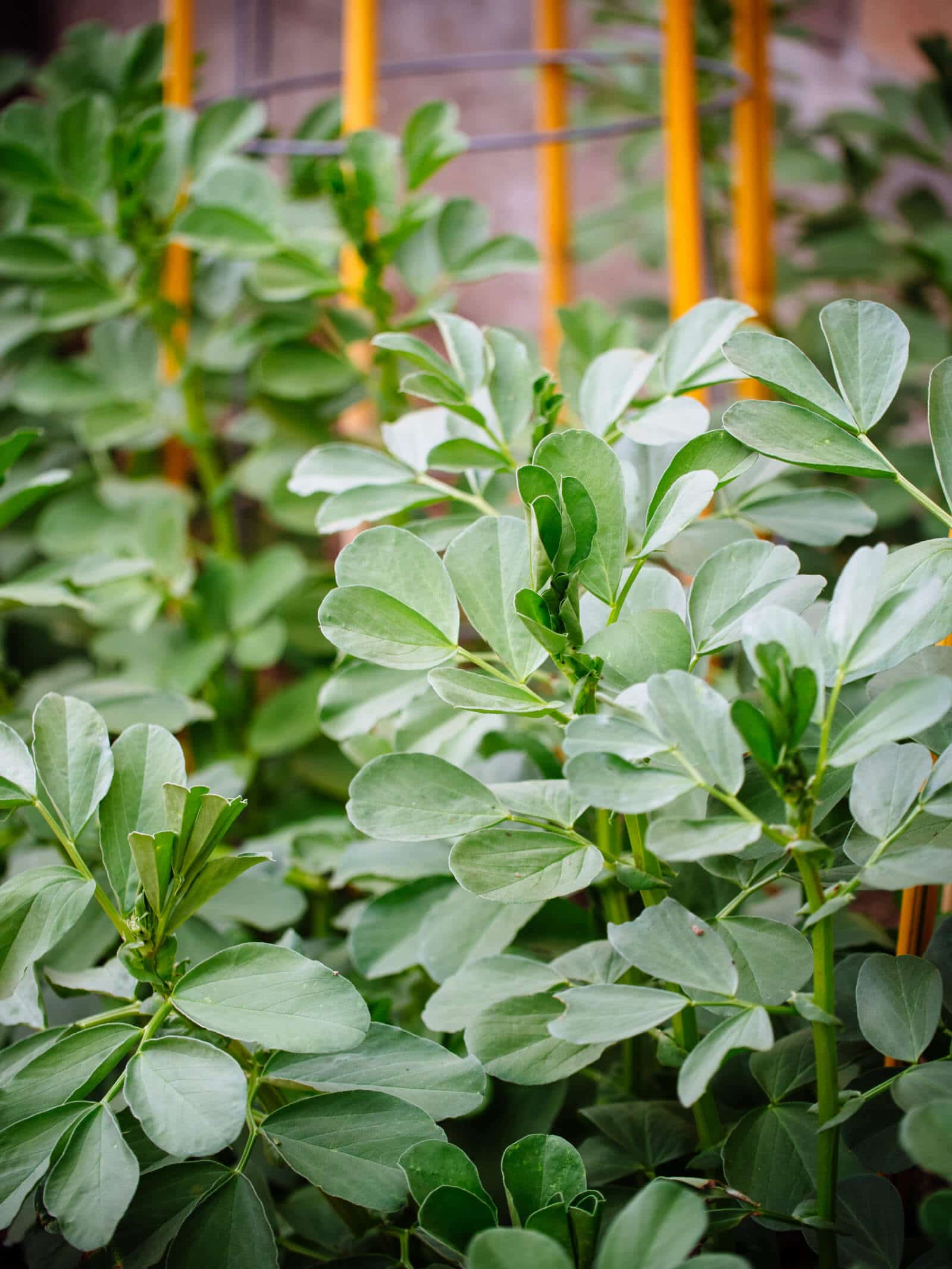
When it comes to the leafy greens of legumes, pea shoots usually come to mind first, and for good reason. They’re among my favorite greens for how versatile they are; you can eat pea shoots raw or cooked, or turn them into “pesto.”
But what about beans?
While most people have eaten green beans, how about bean greens?
You guessed it—the leaves of common green beans (Phaseolus vulgaris), yardlong beans (Vigna unguiculara), runner beans (Phaseolus coccineus), lima beans (Phaseolus lunatus), fava beans (Vicia faba), and hyacinth beans (Lablab purpureus) are 100 percent edible. Like most of the leaves on this list, they’re best used when young and tender.
Fresh fava green salads are my preference in this category, as the plants grow tall and thick with mild-tasting foliage (in a slightly sweet and nutty sense). You can start harvesting fava leaves weeks before the pods emerge and all through the season.
You can harvest the leaves off other bean plants as well, but they’re not nearly as abundant as fava greens and, personally, I try not to risk production if the plants are new.

